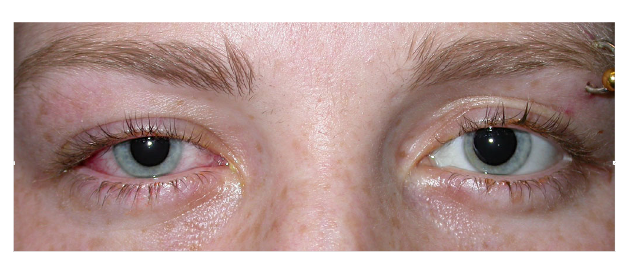- Red Eye (Episcleritis, Scleritis)
The wall of the eyeball is a tough fibrous coat known as the sclera. It appears white to look at. Covering the sclera are two transparent layers; loose episcleral tissue (tenons) and a shiny outer coating known as the conjunctiva. This multi-layer covering of the eye needs to be examined carefully to determine which layer is inflamed. Inflammation appears red. Inflammation of the sclera is known as scleritis. Inflammation of the tenons layer is episleritis, and inflammation of the conjunctiva is known as conjunctivitis. Distinguishing which of these layers is inflammed is important in establishing the diagnosis.
Episcleritis tends to be a superficial redness that can have either no symptoms or mild irritation. Episcleritis can involve just 1 or 2 clock hours of the eye, or the entire surface of the eye. Episcleritis is usually self limiting, and not associated with any underlying diseases. It may be left untreated, or treated with simple lubricant eye drops or non-steroidal eye drops.
Scleritis, on the other hand, tends to be an incredibly painful, and the pain is said to typically wake people at night. Like episcleritis it can be sectoral and involve just 1 or 2 clockhours of the eye, or be more widespread. Scleritis is a much more serious condition than episcleritis, as the swelling can spread all of the way through the thickness of the eye and involve the inside of the eye causing loss of sight. Scleritis can also have links with other conditions that can affect health in general, such as rheumatoid artheritis or lupus. Scleritis needs investigating to find the underlying cause, and treatment usually requires oral medication such as immune suppression.
Right scleritis

